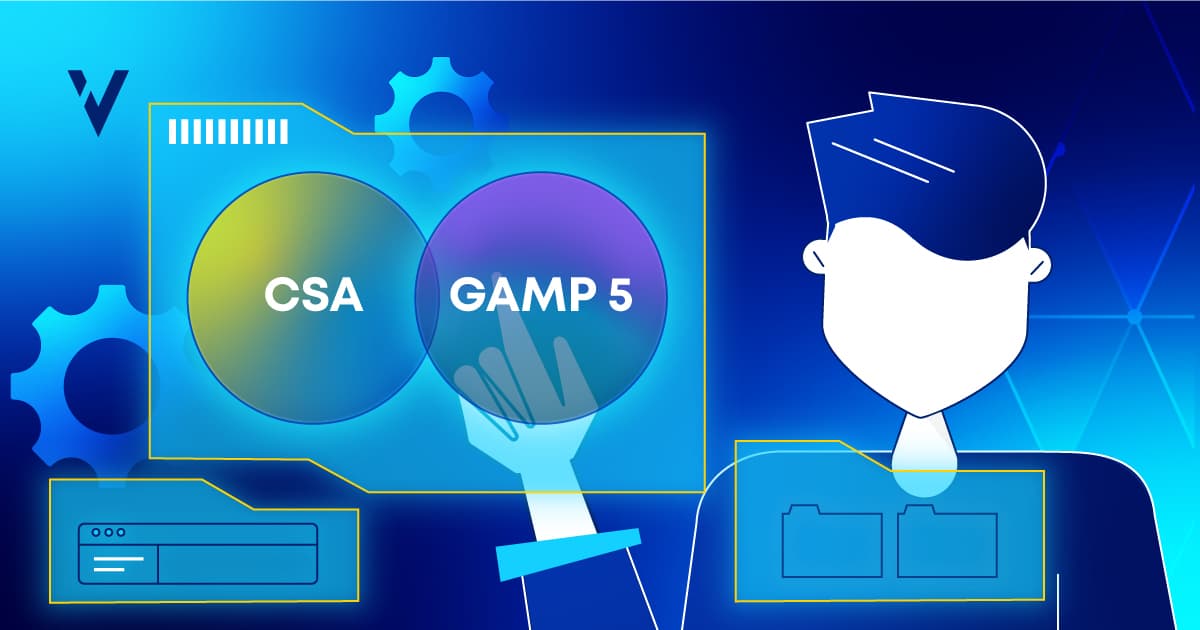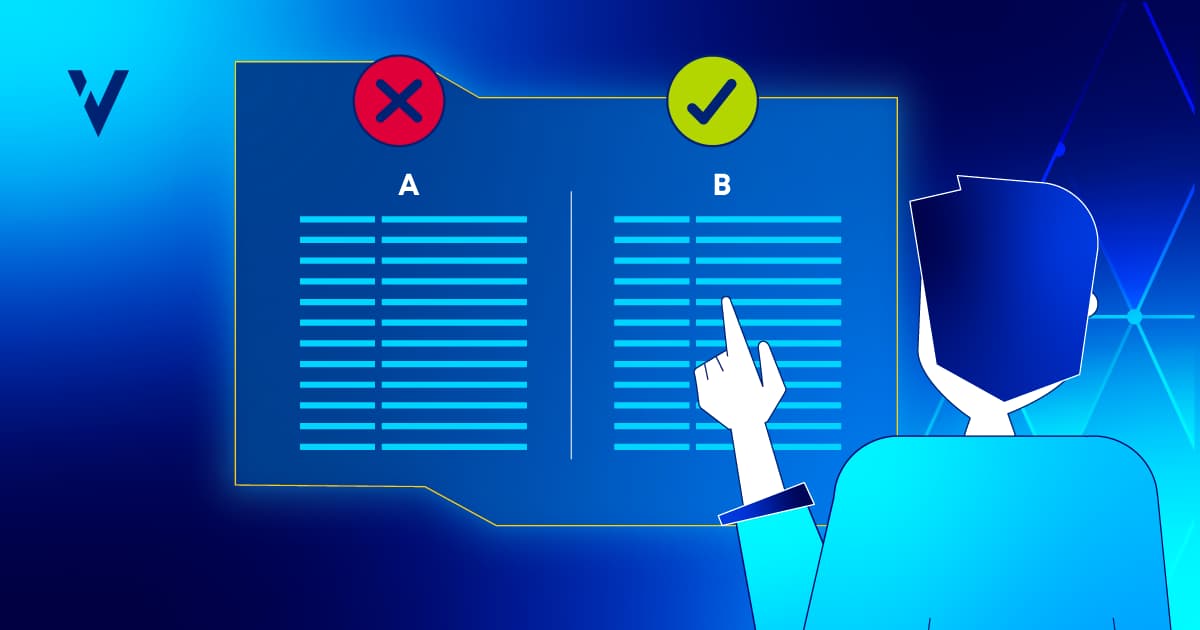The FDA's computer software assurance (CSA) guidance has garnered significant attention but also introduced many misconceptions. This blog post aims to debunk the top five myths about CSA, offering clear insights to help implement these guidelines effectively.
Misconception 1: “The purpose of CSA is to eliminate CSV or scripted testing.”
Many believe that CSA aims to eliminate the computer system validation (CSV) process or scripted testing, but this is not the case. Instead of discarding scripted testing and pre-approved protocols, CSA uses them more judiciously. The focus is on efficiently testing high-risk areas by utilizing existing test/vendor records and automated tools. This approach prioritizes high-risk computerized systems, enhancing efficiency and effectiveness by ensuring thorough testing where it matters most.
Consider a life sciences company deploying a large ERP system, such as SAP, to manage production processes. CSA would prioritize validating the functionalities that directly affect product quality and patient safety. For example, in the production planning module, some functions impact product quality and patient safety and will require more rigorous testing, and other functions have no impact on product quality or patient safety and can be tested with less intensity.
Misconception 2: “The CSA guidance will replace the 2002 General Principles of Software Validation Guidance.”
Although the CSA guidance will supersede Section 6 of the 2002 guidance, it is not intended to replace the entire document. The 2002 General Principles of Software Validation Guidance remains a valuable resource, offering foundational principles that complement the new framework. Computer software assurance enhances and modernizes existing guidelines, especially regarding the validation of automated process equipment and quality system software.
Think of the 2002 guidance as a solid foundation, with CSA building upon it to address contemporary challenges and technologies. Computer software assurance brings a fresh perspective by integrating modern risk-based approaches and leveraging advances in software development and testing. This ensures a more comprehensive and up-to-date validation process without discarding the proven principles established in 2002.
Misconception 3: “More testing + more documentation = better validation.”
The belief that more testing and documentation automatically lead to better validation is a misconception that CSA seeks to address. Excessive testing, especially when applied uniformly regardless of risk, can drain resources and obscure critical issues. Computer software assurance advocates for a risk-based approach, where testing is aligned with the potential impact on patient safety or product quality. This targeted strategy prevents overburdening resources and ensures that high-risk areas of the computerized system receive the necessary attention.
For example, indiscriminately testing all features in a software system that manages clinical trial data could overwhelm the testing team and delay crucial data processing. CSA focuses on functionalities critical for data integrity and patient confidentiality, such as encryption and data access controls. This approach mitigates the most significant risks, enhancing overall validation effectiveness and protecting patient safety and product quality.
Misconception 4: "CSA only applies to medical device manufacturers.”
Although CSA was published by the FDA's Center for Devices and Radiological Health (CDRH) and the Center for Biologics Evaluation and Research (CBER), it is not limited to medical devices.
The framework is relevant to all branches of the life sciences, as indicated in Footnote 1 of the guidance, which mentions consultation with other FDA centers, including the Center for Drug Evaluation and Research (CDER) and the Office of Combination Products (OCP). This broad applicability underscores CSA's utility across various contexts, promoting consistent and effective software assurance practices across the life sciences industry.
Consider a pharmaceutical manufacturer developing a new drug. By applying CSA principles, the company can ensure that computerized systems used in drug development, testing, and manufacturing meet the highest quality and compliance standards. This holistic approach not only supports regulatory requirements but also fosters innovation and efficiency across the entire product lifecycle.
Misconception 5: "Vendor testing cannot be leveraged with CSA.”
A key advantage of CSA is its recognition of vendor testing as a valuable resource. Unlike the traditional CSV process, which often requires duplicative testing efforts, CSA encourages organizations to utilize vendor-provided qualification documentation for functional verification. This approach acknowledges the quality and rigor of vendor testing, provided it meets the necessary standards. By leveraging existing vendor testing, companies can streamline their validation processes, reducing redundancy and conserving resources.
For instance, a life sciences company implementing a new laboratory information management system (LIMS) can benefit from the vendor's expertise and thorough testing to speed up the implementation process. By leveraging the vendor's 21 CFR Part 11 testing, the company can skip its own 21 CFR Part 11 testing, because they trust the vendor's work.
How Does Digital Validation Software Support CSA?
Validation efforts often experience delays because of inflexible test structures or documentation issues, such as cumbersome testing processes, errors in test script generation, misplaced screenshots, or incomplete screengrabs. While these problems may have minimal impact on the system's actual use or validated state, they can consume excessive time and effort from the validation team.Digital validation software can streamline nearly every aspect of the validation process, enhancing quality and safety and reducing patient risk. Here are some key ways it supports CSA:
- Identify the software's intended use: Digital validation lifecycle management systems like ValGenesis VLMS accelerate critical thinking by using system assessments to pinpoint intended use. Additionally, these systems empower users to manage requirements in a library of reusable objects. This expedites document development and ensures consistency, as requirements can be assessed once and used by multiple systems.
- Determine the risk-based approach: A digital validation tool supports quality risk management principles by letting users assess risk at different levels (requirement, functional, or system) and align testing efforts with the risk score. It offers real-time risk reporting with all relevant details, allowing users to focus on what’s important for their needs. The system can be easily customized to set up controls using rules, processes, and templates, and to capture necessary data elements.
- Determine and implement assurance methods and activities: The system routes assigned test categories to designated test developers who develop test scripts in predefined test forms. This consistency in script development fulfills ALCOA+ data integrity requirements.
- Create the appropriate record: Digital validation software speeds up record creation with electronic test case execution and deviation management. It helps maintain validated states and records, making it easier to provide objective evidence and meet 21 CFR Part 11 and Annex 11 compliance requirements with secure audit trails.
Making a Smooth Transition to CSA
The FDA's CSA guidance represents a significant evolution in software assurance practices, promoting a more efficient and practical approach to validation. By addressing these common misconceptions, it becomes clear that CSA is not about eliminating established practices but enhancing them through critical thinking and sound risk management. Embracing CSA can lead to more robust validation processes, better resource allocation, and, ultimately, improved patient safety and product quality. As the life sciences industry continues to innovate, understanding and correctly applying CSA will be essential for maintaining compliance and achieving operational excellence.
ValGenesis is ready to support your transition to CSA. To learn more about our software, reach out to one of our experts or watch the webinar featured below.
Computer Software Assurance (CSA)
Jeff Ramos
Solutions Engineer



